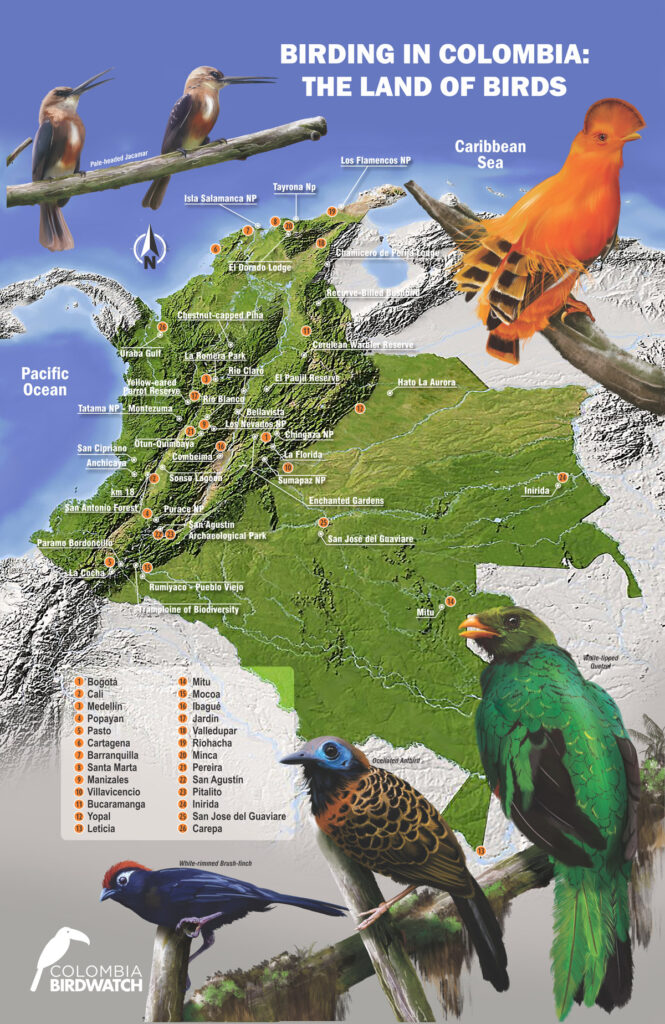Colombia, with its incredibly diverse climates and landscapes, is home to more bird species than any other country in the world. With almost 2,000 species, the country is home to close to 20% of the world’s species of birds yet occupies less than 1% of the world’s landmass. This diversity can be attributed to the intricate Colombian geography in which the Andes play a prominent role. This mountain system, the longest on Earth, branches out into three ranges on its path through Colombia, dissecting the country dramatically between the extensive plains of the Amazon and Orinoco basins to the east and the lowlands along the Pacific and Caribbean coasts to the west. The Western Cordillera is the lowest, while the Central and Eastern Cordilleras have glaciated peaks over 5,000 meters in elevation.
These cordilleras have corresponding valleys between them (Cauca and Magdalena), while to the north of the Andes across the Caribbean lowlands, the isolated Santa Marta Mountains reach an altitude of almost 6,000 meters. Additionally, two oceans sprinkled by archipelagos surround Colombia, the Atlantic to the north and the Pacific to the west.
This complex topography allows for a diverse array of habitats. For instance, cloud forest develops on the windward slopes of the mountains, whilst the leeward versants (slopes) tend to be drier due to rain shadows. The highest ridges of the Andes, frequently exposed to cold temperatures and gusty winds, are dominated by moorlands known as Páramos. To the east of the Andes, extensive grasslands and Amazon rainforest roll over vast plains, whereas to the north dry forest and desert are the norm.
The plains north of the Amazon rainforest, known as ‘The Llanos’, are tropical savannahs where aquatic birds dominate the landscape. This region, part of the Orinoco basin, harbors vast grasslands immersed in a landscape with riparian forests, as well as permanent and ephemeral wetlands. Extensive annual flooding is common here, so birds disperse and congregate accordingly.
West of the Andes is a relatively small region that adds a significant number of bird species to the Colombian list. Precipitation here can reach over 10,000 millimeters per year, one of the highest rates of rainfall in the world. This rainforest, part of the Chocó Bioregion, lies on a narrow belt of lowlands along the Pacific coast which abruptly ascend to the Western Cordillera. This region harbors many species that are restricted to the western side of the Andes in Ecuador and Colombia and is a hot spot of biodiversity.
The stunning bird diversity of Colombia provides an incredible opportunity for birdwatchers to witness one of the apogees of avian evolution on earth. Indeed, if you ever plan to visit Colombia, don’t be too concerned about where to go birding, for this truly is the world’s birdiest country.

